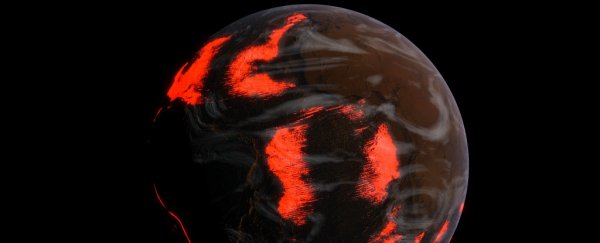There are plenty of ways Earth could go. It could smash into another planet, be swallowed by a black hole, or get pummelled to death by asteroids. There's really no way to tell which doomsday scenario will be the cause of our planet's demise.
But one thing is for sure - even if Earth spends the rest of its eons escaping alien attacks, dodging space rocks, and avoiding a nuclear apocalypse, there will come a day when our own Sun will eventually destroy us.
This process won't be pretty, as Business Insider's video team recently illustrated when they took a look at what will happen to Earth when the Sun finally does die out in a blaze of glory.
And as Jillian Scudder, an astrophysicist at the University of Sussex, explained to Business Insider in an email, the day might come sooner than we think.
Bleeding Earth dry
The Sun survives by burning hydrogen atoms into helium atoms in its core. In fact, it burns through 600 million tons of hydrogen every second.
And as the Sun's core becomes saturated with this helium, it shrinks, causing nuclear fusion reactions to speed up - which means that the Sun spits out more energy.
In fact, for every billion years the Sun spends burning hydrogen, it gets about 10 percent brighter.
And while 10 percent might not seem a lot, that difference could be catastrophic for our planet.
"The predictions for what exactly will happen to Earth as the Sun brightens over the next billion years are pretty uncertain," Scudder said.
"But the general gist is that the increasing heat from the Sun will cause more water to evaporate off the surface, and be held in the atmosphere instead. The water then acts as a greenhouse gas, which traps more incoming heat, which speeds up the evaporation."
Before it ever even runs out of hydrogen, the Sun's high energy light will bombard our atmosphere and "split apart the molecules and allow the water to escape as hydrogen and oxygen, eventually bleeding Earth dry of water", Scudder said.
And it doesn't end there.
A 10 percent increase in brightness every billion years means that 3.5 billion years from today, the Sun will shine almost 40 percent brighter, which will boil Earth's oceans, melt its ice caps, and strip all of the moisture from its atmosphere.
Our planet, once bursting with life, will become unbearably hot, dry, and barren - like Venus.
And as the steady thump of time drums down on our existence, the situation will only get more bleak.
The Sun's death rattle
All good things eventually come to an end. Every book has a final chapter, every pizza has one last bite, and every person has a dying breath.
And one day, about 4 or 5 billion years from now, the Sun will burn through its last gasp of hydrogen and start burning helium instead.
"Once hydrogen has stopped burning in the core of the Sun, the star has formally left the main sequence and can be considered a red giant," Scudder said.
"It will then spend about a billion years expanding and burning helium in its core, with a shell around it where hydrogen is still able to fuse into helium."
As the Sun sheds its outer layers, its mass will decrease, loosening its gravitational hold on all of the planets. So all of the planets orbiting the Sun will drift a little further away.
When the Sun becomes a full blown red giant, Scudder said, its core will get extremely hot and dense while its outer layer expands … a lot.
Its atmosphere will stretch out to Mars' current orbit, swallowing Mercury and Venus.
Although the Sun's atmosphere will reach Mars' orbit, Mars will escape, as it will have wandered past the reach of the Sun's expanding atmosphere.
Earth, on the other hand, has two options: either escape the expanding Sun or be consumed by it. But even if our planet slips out of the Sun's reach, the intense temperatures will burn it to a sad, dead crisp.
"In either case, our planet will be pretty close to the surface of the red giant, which is not good for life," Scudder said.
Although more massive stars can begin another shell of fusing heavier elements when this helium is exhausted, the Sun is too feeble to generate the pressure needed to begin that layer of fusion, Scudder explained.
So when the Sun's helium dries up, it's pretty much all downhill from there.
From red giant to white dwarf
Once the Sun has emptied its fuel reserves, it will become unstable and start to pulse. With every pulse, the Sun will shrug off layers of its outer atmosphere until all that's left is a cold, heavy core, surrounded by a planetary nebula.
With each passing day this core, known as a white dwarf, will cool and fade hopelessly out of existence as if it didn't once host the most lively planet ever discovered in the sweeping canvas of the Universe.
But who knows. Maybe the aliens will get to us first.
This article was originally published by Business Insider.
More from Business Insider:




